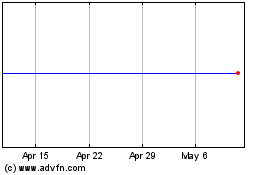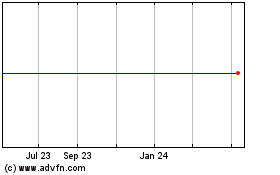UPDATE: BP Abandons 'Top Kill' Attempt To Stem Gulf Oil Leak
May 29 2010 - 8:21PM
Dow Jones News
BP PLC (BP, BP.LN) has abandoned an attempt to plug a mile-deep
oil and natural-gas gusher in the U.S. Gulf of Mexico by injecting
thousands of barrels of drilling fluid and will now try a new
method to contain the flow of hydrocarbons.
"We have been unable to overcome the flow from the well," said
BP Chief Operating Officer Doug Suttles, in a press briefing. "We
now believe it is time to move on to the next of our options," he
said, adding it wasn't clear exactly why the procedure called a top
kill, started on Wednesday, failed to stem the flow of oil and gas.
The decision to give up on the top-kill attempt was made late
Saturday afternoon after consultation with U.S. Secretary of Energy
Steven Chu and Interior Secretary Ken Salazar.
Engineers will now try to contain the flow of oil from the leak
with a so-called lower marine riser package, or LMRP, cap. This
operation would involve removing a broken drilling pipe, or riser,
that lies atop the failed blowout preventer and cap the valve with
a siphon that will take the oil to the surface. Suttles said the
LMRP-cap procedure would take four to seven days. The LMRP cap is a
newly made version of a type of device referred to as a top
hat.
"The next thing to do is to capture all of the flow or as much
of the flow as we can," he said, adding BP "has a lot of
confidence" in the LMRP cap, but couldn't guarantee success. "We
believe the LMRP cap has the potential to capture the great
majority of [the leaking oil]," if it works. Suttles declined to
give a percentage probability that the new containment effort would
succeed, noting that nothing like this had been attempted at 5,000
feet below the surface of the sea. BP had previously said it gave
the now-failed top-kill procedure a 60%-70% chance of success.
"Based on what we know now, we believe the containment cap is
the most effective way to minimize the impact of the oil leak on
the Gulf ecosystem and the people of the region," said BP Chief
Executive Tony Hayward, in an emailed statement. "We'll continue to
refine the effort, to create the most stable and effective
containment process possible."
The failed top-kill effort followed several frustrated attempts
to activate the broken valve known as a blowout preventer and
install containment domes above the leaking well, which is
estimated to be releasing between 12,000 and 19,000 barrels a day
into the Gulf. The spill, which originated more than a month ago,
when Transocean Ltd.'s (RIG) Deepwater Horizon rig blew up and
sank, has officially become the worst in U.S. history, surpassing
the 1989 Exxon Valdez disaster.
If the LMRP cap containment attempt fails, Suttles said earlier
Saturday that the next step would be to try and place another
blow-out preventer atop the broken one.
Seabed drilling of one of two relief wells that will ultimately
allow final plugging of the leak is about halfway finished, Suttles
said, though he added the drilling gets more difficult the deeper
the bit gets. He said early August remains the best estimate for
when drilling of the relief well will be finished.
Suttles also said earlier at a press conference at Fourchon
Beach, La., that the oil-spill recovery operations had cost $940
million to date. He added that BP would reimburse the federal
government for the more than $100 million it supplied.
"Everything to do with cleaning this thing up is our
responsibility," he said.
-By Mark Long, Dow Jones Newswires; 212-416-2145;
mark.long@dowjones.com
(Mark Peters and Angel Gonzalez contributed to this
article.)
Cooper Cameron (NYSE:CAM)
Historical Stock Chart
From Jun 2024 to Jul 2024

Cooper Cameron (NYSE:CAM)
Historical Stock Chart
From Jul 2023 to Jul 2024
